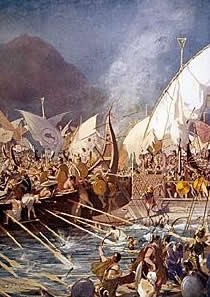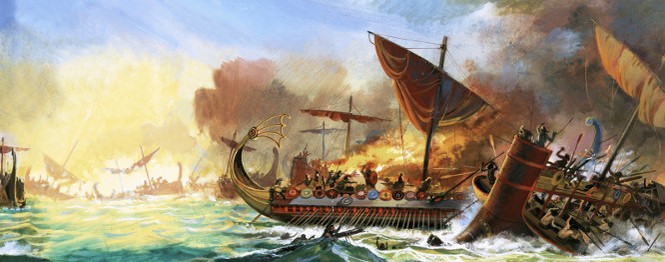In 480 BC, the Persian Emperor Xerxes deployed over 1,200 warships and around 300,000 troops to attack Greece at Salamis Bay. It was the greatest naval battle in the ancient world on an unprecedented scale.
After the marathon defeat of 490 BC, the Persian Empire prepared for the biggest naval battle in ancient world history with the Greek Empire.
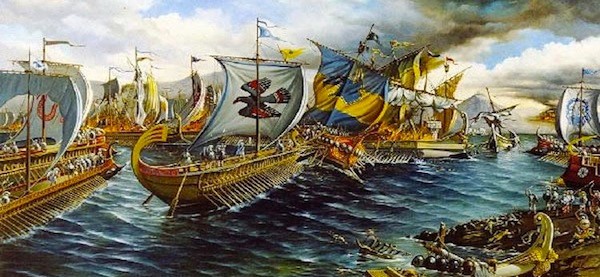 As a result, the Persian Emperor Xerxes deployed over 1,200 warships and around 300,000 troops to participate in the campaign to attack Greece. Before meeting Greek forces in naval battle, Persia lost 400 warships due to sinking storms at sea.
As a result, the Persian Emperor Xerxes deployed over 1,200 warships and around 300,000 troops to participate in the campaign to attack Greece. Before meeting Greek forces in naval battle, Persia lost 400 warships due to sinking storms at sea.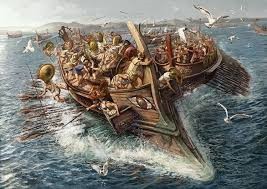 Initially, the Greek army lost the battle against the powerful Persian forces at Thermoplylae and Artemisium. Later, the Greek military leader deliberately freed slaves from the Persian army to provide false information.
Initially, the Greek army lost the battle against the powerful Persian forces at Thermoplylae and Artemisium. Later, the Greek military leader deliberately freed slaves from the Persian army to provide false information.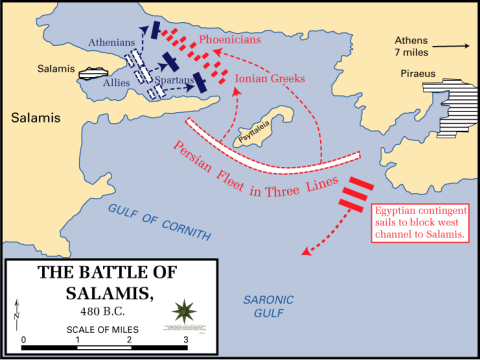 So the Persians succeeded and moved them to Salamis Bay – the battlefield Greece had prepared to complete. Specifically, the Greeks took advantageous positions, awaiting the opportunity to attack the Persians.
So the Persians succeeded and moved them to Salamis Bay – the battlefield Greece had prepared to complete. Specifically, the Greeks took advantageous positions, awaiting the opportunity to attack the Persians.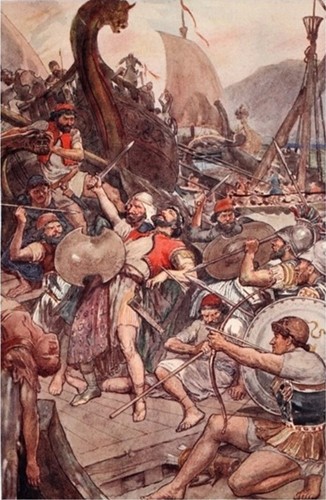 When the Persians arrived, the Greek fleet with just over 300 ships suddenly attacked. This made it difficult to move the 800 large Persian ships.
When the Persians arrived, the Greek fleet with just over 300 ships suddenly attacked. This made it difficult to move the 800 large Persian ships.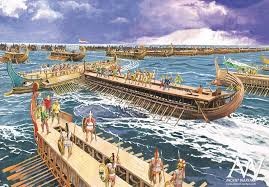 The reason is that the Bay of Salamis is quite narrow, which is not conducive for the Persian fleet to deploy the combat position with hundreds of ships of “enormous” size. Unlike Persia, this land was beneficial to Greece because its warships were small and easy to move.
The reason is that the Bay of Salamis is quite narrow, which is not conducive for the Persian fleet to deploy the combat position with hundreds of ships of “enormous” size. Unlike Persia, this land was beneficial to Greece because its warships were small and easy to move.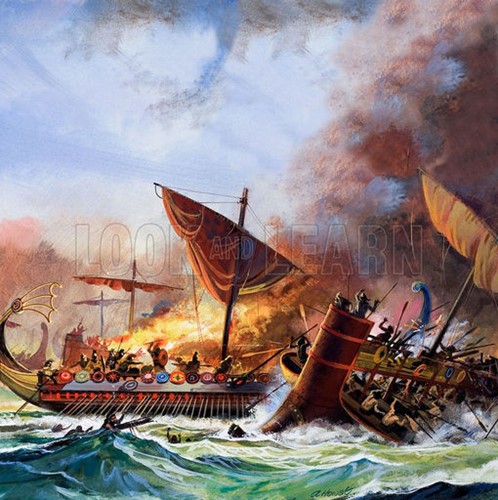 Therefore, in a single day of fierce fighting, the Persian fleet was defeated by Greek forces with over 200 warships destroyed. With such losses, Persia had to hastily withdraw.
Therefore, in a single day of fierce fighting, the Persian fleet was defeated by Greek forces with over 200 warships destroyed. With such losses, Persia had to hastily withdraw.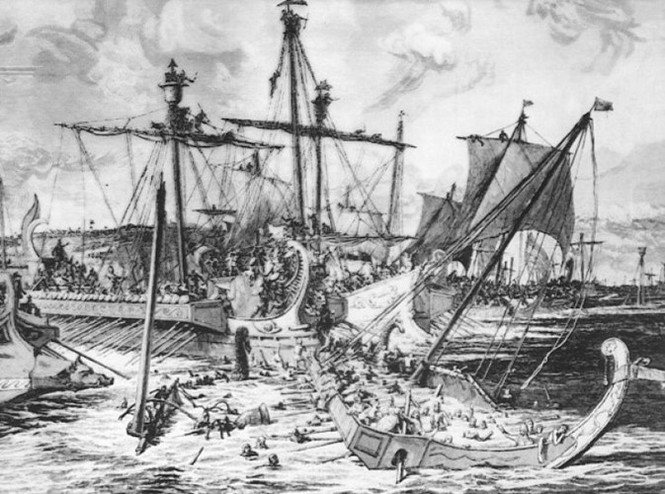 Meanwhile, Greece won the battle at sea with 30 battleships lost. This is considered to be the historic victory of the Greeks over the powerful Persian forces.
Meanwhile, Greece won the battle at sea with 30 battleships lost. This is considered to be the historic victory of the Greeks over the powerful Persian forces.


